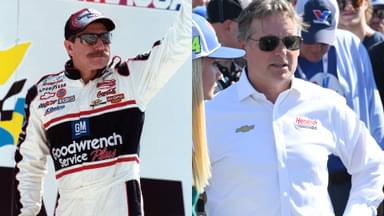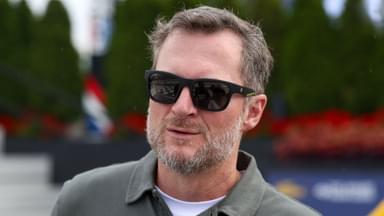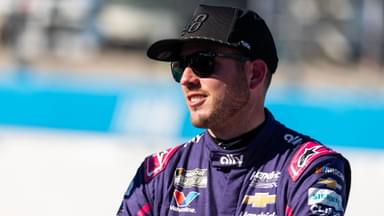Several former NASCAR Cup drivers balked when the sanctioning body first suggested use of the HANS head-and-neck restraint device prior to the start of the 2001 season. Initially, it was supposed to be a voluntary effort.
Advertisement
Among the first naysayers were Dale Earnhardt, who was one of the HANS’ most vocal critics, insisting it wasn’t for him and that he wasn’t going to be part of the experiment promulgated by NASCAR. He made this decision even though extensive testing proved that the system of tethering the helmet to the collar kept a driver’s head from violently moving around in a crash.
In a sad twist of irony, Earnhardt lost his life in a last lap crash at the 2001 Daytona 500 due to the tragic head and neck injury he sustained in that wreck. Many have speculated that if The Intimidator had been wearing the HANS that day, he would have survived – a fact we’ll never really know.
Others who initially balked at the HANS prior to the 2001 season opener included Mark Martin (didn’t like the look or its bulk), Tony Stewart (felt claustrophobic while wearing the device) and Rusty Wallace (preferred an alternative device known as the Hutchens device).
Even Jeff Gordon initially balked, claiming the device was uncomfortable. But two races after Earnhardt’s death, at Las Vegas Motor Speedway, Gordon wore the HANS for the first time in a full race, and then, somewhat interestingly, won the event.
NASCAR would eventually mandate that every driver wear either the HANS or Hutchens device, although the latter was phased out less than five years later in favor of the HANS.
The Day the HANS Saved Jeff Gordon’s Life
Fast-forward to spring 2008, and even though he had dutifully worn it for nearly seven years beforehand, Gordon became the poster boy for what the HANS could truly do in a horrific wreck.
At the same Las Vegas track he had won at seven years earlier, Gordon made contact with the car of Matt Kenseth. While Kenseth’s car could continue on, Gordon’s car was totally destroyed, including knocking the radiator away from the chassis.
While Gordon was shaken, he was not broken in an incident that was almost an instant replay of the crash that claimed Earnhardt’s life.
“In that Las Vegas wreck, I know for a fact that the HANS Device saved my life that day,” Gordon said in a 2021 interview with FOX Sports. “Everything else in my body moved and stretched and was so incredibly sore in the days following that.
“I don’t think my head with just my helmet on it could have survived that without being held back with the HANS.”
Gordon has often called that wreck one of the worst of his career because of its violent nature, a head-on collision with the inside retaining wall. But other than soreness, stiffness, and some bruising over the next several days, he essentially walked away from the crash virtually unscathed. Thanks to the HANS device.
That same HANS, as beaten and banged as it was from the Gordon wreck, is now on permanent display at the Smithsonian National Museum of American History in Washington, D.C., serving as a clear reminder of a technological advancement that has saved countless lives, particularly in auto racing.








